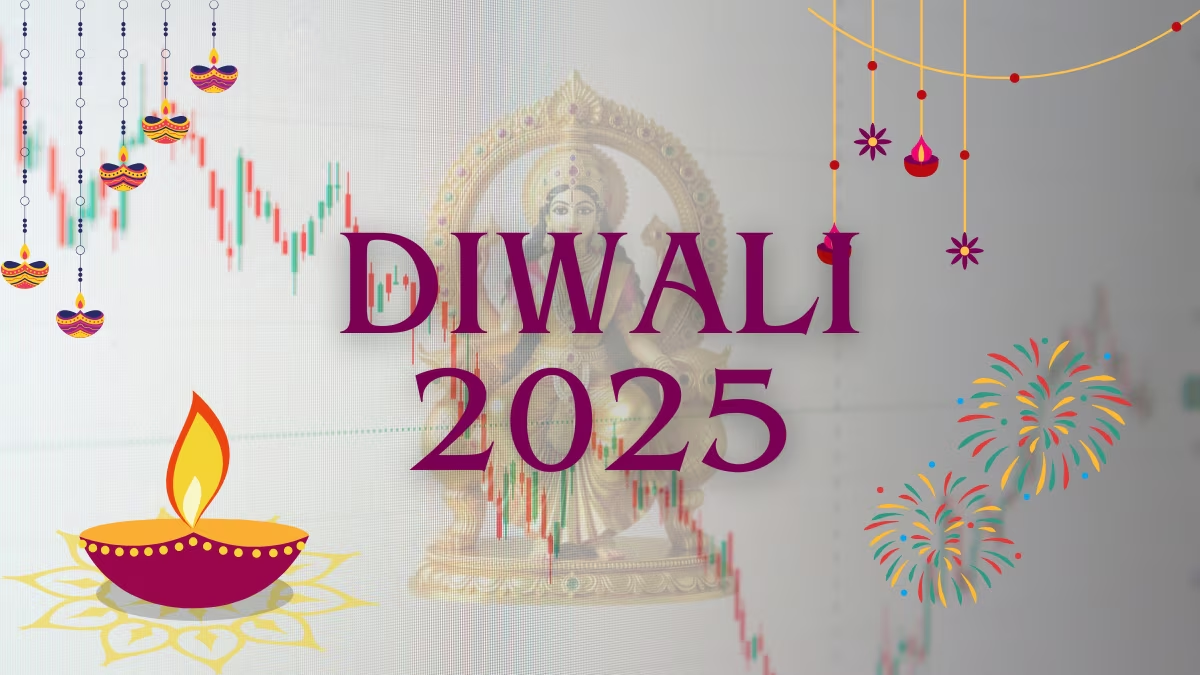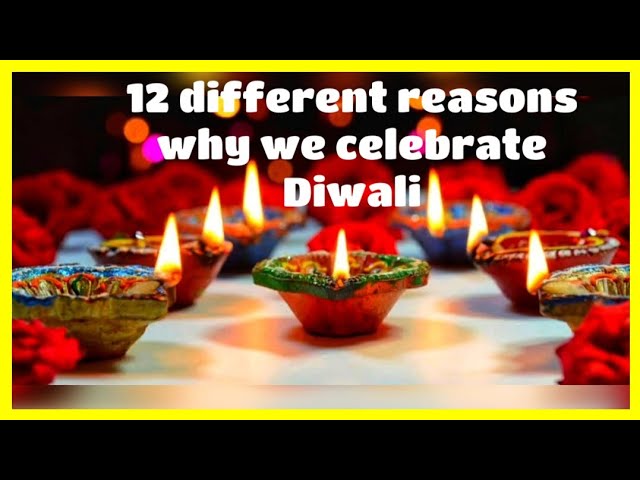Diwali (also known as Deepavali) happens to be one of the most popular festivals in India and among the Indians around the world. It can be referred to as the Festival of Lights and is full of several layers of meaning including mythological, religious, spiritual, social and cultural. Several reasons are interwoven though there is a lot of awareness on the general themes (light over darkness, good over evil) on which the festival is celebrated. This essay gives 12 various reasons (or lenses) in which one can interpret why Diwali is celebrated. They all portray the richness and richness of the festival.
1. The Good vs. Evil -the Ramayana Story
Among the most known causes of celebrating Diwali is based on the epic Ramayana. The legend tells about Lord Rama (with his wife Sita and his brother Lakshmana) visiting his home Ayodhya after 14 years of exile in which he had killed the demon king Ravana. The Ayodhya people rejoicing at his coming and recovered dharma (righteousness) put the rows of lamps (diyas) to receive him.
The setting of the lamps on Diwali is therefore a reminder of that, the victory of what is good over what is bad, the victory of righteousness over corruption. The reason is that, in spite of the dark times, the festival is a reminder to us that good, integrity and courage will reign supreme.
It is a theme that is being felt even outside that very story: in life, we have our struggles or hardships too, and Diwali makes us feel like the side of the light is going to prevail.
2. The Conquest of Narakasura by Krishna
A second significant legend is especially related to South India or to some schools of the larger Hindu tradition: the demon Narakasura had terrorized the population, abducted numerous women and put them in prison. Lord Krishna (accompanied with his consort Satyabhama in some versions) finally overpowered Narakasura, set the hostages free and destroyed the army of the dark. The celebration of that win is constituted in Diwali (usually on the day that is referred to as Naraka Chaturdashi or Chhoti Diwali).
In this way, Diwali turns into a festival of freedom of tyranny and darkness not only external, but also internal (ignorance, fear, ego).
3. The Rebirth / The Birth of Goddess Lakshmi
The festival is closely related to the goddess Lakshmi, ruler of wealth, prosperity and good fortune. According to one myth, in the process of the churning of the cosmic ocean (Samudra Manthan), Lakshmi got out of the ocean and chose Vishnu as her made-in-love with. There are traditions which believe that she decided to appear or become available to the devotees on the eve of Diwali.
Due to this reason, families call on the blessings of Lakshmi and wish to receive both material and spiritual luck. The reason behind lighting lamps is also to invite Lakshmi into homes meaning that her light and grace can be invited. There are people who think that the darkness (negativity, bad things) should be eliminated in order to bring prosperity.
4. Diwali as a Harvest / Agrarian Festival and End of Harvest Season
Mythological agrarian and seasonal cycles have a long history before mythological overlays Diwali. In most parts, Diwali follows the harvests, which are collected after the main harvest, before the cold or leaner season sets in. This is an occasion of relaxation, thanking, and renewal time – a time to thank a harvest abundance and clean houses, pack away the harvest, and get ready to start over.
That way, Diwali is a harvest festival in spirit, a cultural event where people take a moment and rejoice in the fruits of group productivity.
5. The Pandavas back home (Mahabharata)
In certain regional folklores, Diwali is also recalled as the day when the Pandavas (the Mahabharata) both came out of exile to their kingdom. It is said in these traditions that on the night of the new moon (Amavasya) during Kartika (i.e. Diwali), the Pandavas came to Hastinapura, and the occasion was marked by the Pandavas returning.
That one also makes the message of resurrection, justice and bringing order back.
6. Sikh Tradition and Bandi Chhor Divas
Sikhs also celebrate Diwali although on a different historical basis. The festival is held together with Bandi Chhor Divas, the liberation of the sixth Sikh Guru, Guru Hargobind Ji, and 52 Hindu kings who had been incarcerated by the Mughal emperor Jahangir in Gwalior. Guru Hargobind is believed to have bargained with their release and re-entered the Golden Temple in Amritsar on a Diwali night and the temple was lit with joy.
Therefore, to Sikhs, Diwali reminds them of the freedom, justice and divine grace that intervenes in humans.
7. Mahavira’s Nirvana (Jainism)
To Jains, Diwali is very important: warmly it is the day when Lord Mahavira, the 24th and the last Tirthankara (spiritual teacher) reached enlightenment on the new moon of Kartika. Jains celebrate Diwali as the anniversary of his last realization, when his soul got out of the circle of birth and death.
Hence, Diwali in the Jain community is not just a festival but a spiritual celebration of enlightenment, nonattachment and knowledge against ignorance.
8. Diwali as a New Year / Financial / Business Revitalization

In a number of regions (particularly in Gujarat, a part of North India, and among merchant communities) Diwali is taken as the start of a new business cycle, or a financial new year. During Dhanteras (the first day), people open new account books, buy precious metals and commence new ventures or contracts on auspicious times.
Diwali is therefore seen as a period of rebirth – wiping the slate clean, settling scores, starting new businesses, in a figurative way ushering prosperity and success to the next year.
9. Spiritual Victory: Light Over Dark, Knowledge Over Ignorance
It may be the most profound layer, the symbolism of light itself. The basic idea of Diwali is the inner light overcoming the inner darkness, which means that knowledge overpowers ignorance, clarity overpowers confusion, and virtue overpowers vice. The setting of lamps, explosion of fireworks, and light of houses are external manifestations of an internal desire: to wake up, to cleanse, to have a clear vision.
Additionally, certain spiritual doctrines take Diwali as the occasion to shake off the stagnation, indolence, bad things in one life – to be awake and live.
Thus, in addition to mythology, Diwali can be understood as a metaphorical trip, that is, between the shadow and the light, between fear and belief, between sleep and wakefulness.
10. Social Cohesion, Family & Community Bonding
Diwali is another social festival. It unites families, friends, neighbors and communities. Cleaning and decorating houses, giving of gifts and sweets, feasts, visiting, fairs, and lighting community displays are all activities that cement relationships.
In a world that is more divided than ever, festival seasons such as Diwali remind us of our ties – that we all are social networks, that our happiness makes us all come together, and that we all have eaten cake together, will help us mend our fences.
This aspect of the society is not accidental; it belongs to the reasons that have made the festival live and proliferate to places and even confessions.
11. Generosity and Charity and Moral Renewal
The other important cause is that Diwali makes individuals observe dana (charity), forgive, be generous, and cleanse their inner being. The festival is an event that many people take advantage of to offer a helping hand to the less privileged, give food, donate to charities or share their good fortune with their neighbors. It means that light is not to serve self-interest only, it has to be distributed.
And so, Diwali can also be a period of reconciliation – of forgetting enmity, forgetting vile feelings and renewing relationships. It encourages moral reflection, rejuvenation and re-dedication towards higher values.
By doing this, the festival will be more than merriment; it will be an ethical re-orientation.
12. Cultural Identity, Continuity and Inclusivity
Lastly, Diwali is a festival that is used as a sign of cultural heritage, identity, and continuity. Diwali to many individuals particularly in a globalized, diasporic environment, links them to their ancestral origin, customs, narratives, languages, and mutual recollection. The festival maintains arts (rangoli, diyas, decorations), cuisines (sweets, festive foods), folk stories, and family practices.
Meanwhile, Diwali has become open to everyone: it is based on Hindu tradition, but it is celebrated by representatives of various religious confessions (Jains, Sikhs, and even some Buddhists) and non-Indians who share the values of light, hope, and community.
Therefore, Diwali aids the passage of intergenerational memory, cultural pride and group identity.
Overlaps & Interrelationships
It is worth mentioning that these 12 reasons are not separate from one another, they overlap and interconnect. For example:
The mythological narratives (Rama, Krishna, Narakasura) are all aiming at the theme of good overcoming evil, which can be related to the overall symbolism of spiritual triumph.
The call of Lakshmi, new account books opening, and renewal of business all both connect the secular and spiritual aspects.
The processes of social cohesion, generosity and moral renewal work in concert: as individuals unite, they are not only meant to rejoice but to cleanse, forgive, and renew.
The continuity and cultural identity of the practices do not mean that stories, rituals, decorations have died, but that they are being adapted to new environments.
Therefore, Diwali is multivalent, since it operates at numerous levels at once; mythic, symbolic, social, economic, spiritual, and emotional.
A few Subtleties and Local Flavors
- The exact narratives and focus vary according to the region. The Ramayana story is more prevalent in Northern India. In South India, more importance is placed on the Krishna -Narakasura myth.
- In Eastern India (e.g. West Bengal), the festival tend to be rather Kali Puja (worship of goddess Kali) centered than Lakshmi centered.
- Diwali is a serious day of contemplation and religious awe among Jain, not fireworks and merry-making.
- The Bandi Chhor Divas story is central among the Sikhs and the Golden Temple is well lit.
- Diwali is also celebrated in certain Buddhist societies (e.g. Newar Buddhists in Nepal), and usually in combination with local traditions.
- The consciousness of the environment is becoming a significant overlay: a lot of the citizens now promote the idea of celebrating Diwali with fewer firecrackers, using eco-friendly lights and limiting noise, causing less pollution and animal damage.
Coming It All Together: What Diwali Teaches Us
Putting all these reasons in mind, we understand that Diwali is not merely the festival of lights but it is:
- A memory of mythical triumphs (Rama, Krishna, Mahavira) that preserve the moral ideals.
- A representation of the inner change, as we should create light in our hearts.
- It is a societal event, a knitting group, a way to resolve conflicts, bring happiness.
- A rebirth, material (new books, new enterprises) as well as spiritual (forgiveness, cleansing).
- Cultural anchor, the tradition, art, story telling, intergenerational.
At its core, Diwali teaches that darkness is not the absence of light — it is a challenge to be confronted; that within each person lie the seeds of light if nurtured; that goodness, unity, remembrance, and compassion are worth celebrating and safeguarding.

